| Main Portal page | Indices | Projects |
 Flag of the CARICOM |
 Playa de Cayo Levantado |
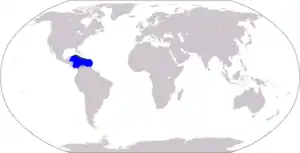 | |
The Caribbean (/ˌkærɪˈbiːən, kəˈrɪbiən/ KARR-ih-BEE-ən, kə-RIB-ee-ən, locally /ˈkærɪbiːæn/ KARR-ih-bee-an; Spanish: el Caribe; French: les Caraïbes; Dutch: de Caraïben) is a subregion of the Americas that includes the Caribbean Sea and its islands, some of which are surrounded by the Caribbean Sea and some of which border both the Caribbean Sea and the North Atlantic Ocean; the nearby coastal areas on the mainland are often also included in the region. The region is southeast of the Gulf of Mexico and the North American mainland, east of Central America, and north of South America.
Situated largely on the Caribbean Plate, the region has more than 700 islands, islets, reefs, and cays. Island arcs delineate the northern and eastern edges of the Caribbean Sea: the Greater Antilles in the north and the Lesser Antilles, which includes the Leeward Antilles, in the east and south. The nearby Lucayan Archipelago, comprising The Bahamas and the Turks and Caicos Islands, is considered to be a part of the Caribbean despite not bordering the Caribbean Sea. All the islands in the Antilles plus the Lucayan Archipelago form the West Indies, which is often interchangeable with the term Caribbean. On the mainland, Belize, the eastern and northern coasts of Central and South American countries such as the Bay Islands Department of Honduras, the North and South Caribbean Autonomous Regions of Nicaragua, the Limón Province of Costa Rica, Colón Province of Panama, and the Archipelago of San Andrés, Providencia and Santa Catalina in Colombia are also considered culturally Caribbean. Guyana, French Guiana and Suriname are often included as parts of the Caribbean due to their political and cultural ties with the region.
Geopolitically, the islands of the Caribbean are often regarded as a subregion of North America, though sometimes they are included in Middle America or left as a subregion of their own and are organized into 33 political entities, including 13 sovereign states, 12 dependencies, one disputed territory, and seven other overseas territories. From December 15, 1954, to October 10, 2010, there was a territory known as the Netherlands Antilles composed of five islands, all of which were Dutch dependencies. From January 3, 1958, to May 31, 1962, there was also a short-lived political union called the West Indies Federation composed of ten English-speaking Caribbean territories, all of which were then British dependencies. (Full article...)
 Good article -
Good article -
Hurricane Betsy, known as Hurricane Santa Clara in Puerto Rico, was the first North Atlantic hurricane to make landfall in Puerto Rico in 24 years. The third tropical cyclone of the 1956 Atlantic hurricane season, Betsy developed from a tropical wave on August 9 to the east of the Lesser Antilles. It rapidly developed into a 120 mph (190 km/h) major hurricane before striking Guadeloupe. There, Betsy heavily damaged 1000 houses and left severe crop destruction, and there were 18 deaths in the territory. As Betsy continued into the northeastern Caribbean, it capsized a ship, killing its crew of two.
On August 12, Betsy struck southeastern Puerto Rico and quickly crossed the island. Damage was heaviest where it moved ashore and in the territory's central portion, and throughout Puerto Rico there were 15,023 houses that were destroyed by Betsy. Multiple locations reported heavy crop damage, including Camuy which reported a complete loss of the corn crop. Hurricane Betsy was the first hurricane to be observed from the San Juan radar, and also resulted in the first hurricane warning on the island to be released on television. The hurricane left $40 million in damage and 16 deaths, which prompted a federally declared disaster area. Locally the hurricane was known as the Santa Clara Hurricane. After exiting Puerto Rico, Betsy brushed the Bahamas before turning northeastward, becoming extratropical on August 18. The remnants dissipated two days later to the south of Newfoundland. (Full article...)Selected geography article -
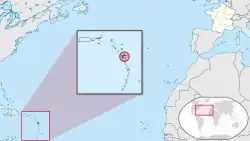
Guadeloupe (/ˌɡwɑːdəˈluːp/; French: [ɡwad(ə)lup] ⓘ; Guadeloupean Creole French: Gwadloup, IPA: [ɡwadlup]) is an archipelago and overseas department and region of France in the Caribbean. It consists of six inhabited islands—Basse-Terre, Grande-Terre, Marie-Galante, La Désirade, and the two inhabited Îles des Saintes—as well as many uninhabited islands and outcroppings. It is south of Antigua and Barbuda and Montserrat and north of the Commonwealth of Dominica. The region's capital city is Basse-Terre, located on the southern west coast of Basse-Terre Island; however, the most populous city is Les Abymes and the main centre of business is neighbouring Pointe-à-Pitre, both located on Grande-Terre Island. It had a population of 384,239 in 2019.
Like the other overseas departments, it is an integral part of France. As a constituent territory of the European Union and the Eurozone, the euro is its official currency and any European Union citizen is free to settle and work there indefinitely. However, as an overseas department, it is not part of the Schengen Area. The region formerly included Saint Barthélemy and Saint Martin, which were detached from Guadeloupe in 2007 following a 2003 referendum. (Full article...)Selected fare or cuisine -

Did you know? -
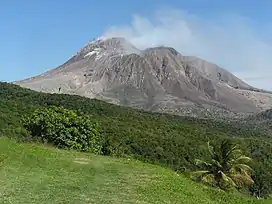
- ...that during the American Revolutionary War, Montserrat was briefly captured by France before being returned to the United Kingdom under the Treaty of Versailles which ended that conflict?
- ...that Havana Club is sold outside Cuba in conjunction with the Pernod Ricard drinks company, but is not sold in the United States due to the ongoing embargo on Cuban products?
- ...that with an average income of around $42,000, Cayman islanders enjoy the highest standard of living in the Caribbean? Due in large part to its status as a leading offshore financial centre.
Related portals
Wikiproject
 Featured article -
Featured article -
The music of the Lesser Antilles encompasses the music of this chain of small islands making up the eastern and southern portion of the West Indies. Lesser Antillean music is part of the broader category of Caribbean music; much of the folk and popular music is also a part of the Afro-American musical complex, being a mixture of African, European and indigenous American elements. The Lesser Antilles' musical cultures are largely based on the music of African slaves brought by European traders and colonizers. The African musical elements are a hybrid of instruments and styles from numerous West African tribes, while the European slaveholders added their own musics into the mix, as did immigrants from India. In many ways, the Lesser Antilles can be musically divided based on which nation colonized them.
The former British colonies include Trinidad and Tobago, whose calypso style is an especially potent part of the music of the other former British colonies, which also share traditions like the Big Drum dance. The French islands of Martinique and Guadeloupe share the popular zouk style and have also had extensive musical contact with the music of Haiti, itself once a French colony though not part of the Lesser Antilles. The Dutch colonies of Curaçao, Bonaire and Aruba share the combined rhythm popular style. The islands also share a passion for kaseko, a genre of Surinamese music; Suriname and its neighbors Guyana and French Guiana share folk and popular styles that are connected enough to the Antilles and other Caribbean islands that both countries are studied in the broader context of Antillean or Caribbean music. (Full article...)Selected image -
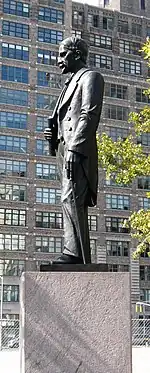
Statue of Juan Pablo Duarte at Duarte Square in New York City
Selected music -
General images
Caribbean topics
Categories
New articles
Rules | Match log | Results page (for watching) | Last updated: 2023-11-30 20:05 (UTC)
Note: The list display can now be customized by each user. See List display personalization for details.
- Magnolia Howell (edit | talk | history | links | watch | logs | tools) by Habst (talk · contribs · new pages (66)) started on 2023-11-30, score: 32
- Harrisia fernowii (edit | talk | history | links | watch | logs | tools) by Cs california (talk · contribs · new pages (16)) started on 2023-11-30, score: 16
- 2014 United States Virgin Islands legislative election (edit | talk | history | links | watch | logs | tools) by LiveIsle2022 (talk · contribs · new pages (3)) started on 2023-11-30, score: 16
- United Nations Security Council Resolution 2466 (edit | talk | history | links | watch | logs | tools) by Maciej Mucharski (talk · contribs · new pages (15)) started on 2023-11-30, score: 32
- United Nations Security Council Resolution 2410 (edit | talk | history | links | watch | logs | tools) by Maciej Mucharski (talk · contribs · new pages (15)) started on 2023-11-30, score: 16
- Alexander Yui (edit | talk | history | links | watch | logs | tools) by Ogiwarahoshi (talk · contribs · new pages (3)) started on 2023-11-30, score: 16
- 2024 in Grenada (edit | talk | history | links | watch | logs | tools) by Rickyurs (talk · contribs · new pages (84)) started on 2023-11-29, score: 35
- 2024 in Jamaica (edit | talk | history | links | watch | logs | tools) by Rickyurs (talk · contribs · new pages (84)) started on 2023-11-29, score: 35
- Isaac Antwi Omane (edit | talk | history | links | watch | logs | tools) by DaSupremo (talk · contribs · new pages (13)) started on 2023-11-29, score: 16
- 2024 in Barbados (edit | talk | history | links | watch | logs | tools) by Rickyurs (talk · contribs · new pages (84)) started on 2023-11-29, score: 35
- Black Cake (TV series) (edit | talk | history | links | watch | logs | tools) by Sunuraju (talk · contribs · new pages (5)) started on 2023-11-29, score: 16
- Oenothera humifusa (edit | talk | history | links | watch | logs | tools) by Abductive (talk · contribs · new pages (56)) started on 2023-11-29, score: 16
- 2024 in Puerto Rico (edit | talk | history | links | watch | logs | tools) by Rickyurs (talk · contribs · new pages (84)) started on 2023-11-29, score: 35
- West Indies A cricket team in South Africa in 2023-24 (edit | talk | history | links | watch | logs | tools) by Godknowme1 (talk · contribs · new pages (4)) started on 2023-11-29, score: 16
- 2024 in the Bahamas (edit | talk | history | links | watch | logs | tools) by Rickyurs (talk · contribs · new pages (84)) started on 2023-11-29, score: 35
- 2024 in Cuba (edit | talk | history | links | watch | logs | tools) by Rickyurs (talk · contribs · new pages (84)) started on 2023-11-29, score: 35
- LaVerne E. Ragster (edit | talk | history | links | watch | logs | tools) by TJMSmith (talk · contribs · new pages (58)) started on 2023-11-29, score: 24
- El Santo filmography (edit | talk | history | links | watch | logs | tools) by AmorPatiturMoras (talk · contribs · new pages (2)) started on 2023-11-28, score: 24
- Lourdes Huanca Atencio (edit | talk | history | links | watch | logs | tools) by Meliboxeo (talk · contribs · new pages (1)) started on 2023-11-28, score: 16
- United Nations Permanent Forum on People of African Descent (edit | talk | history | links | watch | logs | tools) by LuchoCR (talk · contribs · new pages (2)) started on 2023-11-28, score: 16
- MFK (edit | talk | history | links | watch | logs | tools) by Duckmather (talk · contribs · new pages (54)) started on 2023-11-28, score: 16
- Leviathan Press (edit | talk | history | links | watch | logs | tools) by Stoshmaster (talk · contribs · new pages (3)) started on 2023-11-28, score: 16
- Tony Tribe (edit | talk | history | links | watch | logs | tools) by Launchballer (talk · contribs · new pages (8)) started on 2023-11-27, score: 16
- Inauguration of Javier Milei (edit | talk | history | links | watch | logs | tools) by Dl.thinker (talk · contribs · new pages (33)) started on 2023-11-21, score: 16
- Harrisia eriophora (edit | talk | history | links | watch | logs | tools) by Cs california (talk · contribs · new pages (16)) started on 2023-11-28, score: 16
- Javier Milei 2023 presidential campaign (edit | talk | history | links | watch | logs | tools) by Davide King (talk · contribs · new pages (71)) started on 2023-11-28, score: 16
- Joe Gibbs (disambiguation) (edit | talk | history | links | watch | logs | tools) by Bagumba (talk · contribs · new pages (89)) started on 2023-11-28, score: 32
- Life of L. Ron Hubbard from 1975 to 1986 (edit | talk | history | links | watch | logs | tools) by Feoffer (talk · contribs · new pages (2)) started on 2023-11-28, score: 16
- Nymphaea rudgeana (edit | talk | history | links | watch | logs | tools) by Conan Wolff (talk · contribs · new pages (2)) started on 2023-11-27, score: 32
- 2010 Taini Jamison Trophy Series (edit | talk | history | links | watch | logs | tools) by Djln19 (talk · contribs · new pages (14)) started on 2023-11-27, score: 16
- Paola Madriñán (edit | talk | history | links | watch | logs | tools) by Hey man im josh (talk · contribs · new pages (271)) started on 2023-11-27, score: 27
- List of historical separatist movements in North America (edit | talk | history | links | watch | logs | tools) by Thingsomyipisntvisable2 (talk · contribs · new pages (12)) started on 2023-11-27, score: 96
- 2017 United States Virgin Islands special legislative election (edit | talk | history | links | watch | logs | tools) by LiveIsle2022 (talk · contribs · new pages (3)) started on 2023-11-25, score: 35
- Ricky Patel (edit | talk | history | links | watch | logs | tools) by Pail Soo (talk · contribs · new pages (10)) started on 2023-11-21, score: 16
- Presidency of Dilma Rousseff (edit | talk | history | links | watch | logs | tools) by Racnela21 (talk · contribs · new pages (17)) started on 2023-11-27, score: 16
- 2024 FIBA Men's Olympic Qualifying Tournaments – San Juan (edit | talk | history | links | watch | logs | tools) by Kante4 (talk · contribs · new pages (9)) started on 2023-11-27, score: 16
- Lior Engelman (edit | talk | history | links | watch | logs | tools) by Eladkarmel (talk · contribs · new pages (10)) started on 2023-11-27, score: 16
- Francesco Arcadi (edit | talk | history | links | watch | logs | tools) by A.S. Brown (talk · contribs · new pages (2)) started on 2023-11-27, score: 16
- October 1974 (edit | talk | history | links | watch | logs | tools) by Gildir (talk · contribs · new pages (17)) started on 2023-11-27, score: 16
- 1990 Puerto Rico Open – Singles (edit | talk | history | links | watch | logs | tools) by Pablito064 (talk · contribs · new pages (16)) started on 2023-11-27, score: 16
- John M. Hathaway (edit | talk | history | links | watch | logs | tools) by MoviesandTelevisionFan (talk · contribs · new pages (135)) started on 2023-11-26, score: 16
- Vilmos Meruk (edit | talk | history | links | watch | logs | tools) by 180app (talk · contribs · new pages (79)) started on 2023-11-26, score: 16
- 2024 FIBA Men's Olympic Qualifying Tournaments (edit | talk | history | links | watch | logs | tools) by Hariboneagle927 (talk · contribs · new pages (7)) started on 2023-11-26, score: 16
- 54th International Film Festival of India (edit | talk | history | links | watch | logs | tools) by Rickyurs (talk · contribs · new pages (84)) started on 2023-11-21, score: 16
- Tomás González González (edit | talk | history | links | watch | logs | tools) by Roberto221 (talk · contribs · new pages (1)) started on 2023-11-18, score: 16
- USLHT Jessamine (edit | talk | history | links | watch | logs | tools) by Jordanroderick (talk · contribs · new pages (2)) started on 2023-11-17, score: 24
- List of storms named Bettina (edit | talk | history | links | watch | logs | tools) by Sleepinthestars (talk · contribs · new pages (40)) started on 2023-11-26, score: 16
- Embargo of Russian oil during the Russo-Ukrainian War (edit | talk | history | links | watch | logs | tools) by Ânes-pur-sàng (talk · contribs · new pages (3)) started on 2023-11-26, score: 16
- Emerging Ireland cricket tour of West Indies 2023-24 (edit | talk | history | links | watch | logs | tools) by Godknowme1 (talk · contribs · new pages (4)) started on 2023-11-26, score: 24
- John E. Burton (edit | talk | history | links | watch | logs | tools) by IcelandGull (talk · contribs · new pages (10)) started on 2023-11-26, score: 16
- 2021 Transat Jacques Vabre (edit | talk | history | links | watch | logs | tools) by Yachty4000 (talk · contribs · new pages (16)) started on 2023-11-25, score: 16
- Puerto Rico grunt (edit | talk | history | links | watch | logs | tools) by Alomomola (talk · contribs · new pages (15)) started on 2023-11-25, score: 43
- Survivor – A sziget (season 1) (edit | talk | history | links | watch | logs | tools) by Nintenga (talk · contribs · new pages (1)) started on 2023-11-25, score: 16
- WestCare Foundation (edit | talk | history | links | watch | logs | tools) by Vanderwaalforces (talk · contribs · new pages (61)) started on 2023-11-25, score: 48
- Pelecyphora cubensis (edit | talk | history | links | watch | logs | tools) by Cs california (talk · contribs · new pages (16)) started on 2023-11-24, score: 16
- John S. Winn (edit | talk | history | links | watch | logs | tools) by Billmckern (talk · contribs · new pages (5)) started on 2023-11-24, score: 16
- Operation South (edit | talk | history | links | watch | logs | tools) by Applodion (talk · contribs · new pages (3)) started on 2023-11-24, score: 16
- 2009 Taini Jamison Trophy Series (edit | talk | history | links | watch | logs | tools) by Djln19 (talk · contribs · new pages (14)) started on 2023-11-24, score: 16
- List of 1950s films based on actual events (edit | talk | history | links | watch | logs | tools) by WhatamIdoing (talk · contribs · new pages (7)) started on 2023-11-24, score: 16
- M Dot R (edit | talk | history | links | watch | logs | tools) by GiantSnowman (talk · contribs · new pages (31)) started on 2023-11-24, score: 16
- List of honors received by Daisaku Ikeda (edit | talk | history | links | watch | logs | tools) by Thriley (talk · contribs · new pages (67)) started on 2023-11-24, score: 24
- Gérard La Viny (edit | talk | history | links | watch | logs | tools) by Idylh (talk · contribs · new pages (2)) started on 2023-11-24, score: 16
- V. J. Edgecombe (edit | talk | history | links | watch | logs | tools) by GPL93 (talk · contribs · new pages (12)) started on 2023-11-13, score: 16
- Machos (edit | talk | history | links | watch | logs | tools) by Tassedethe (talk · contribs · new pages (196)) started on 2023-11-24, score: 16
- List of awards received by Daisaku Ikeda (edit | talk | history | links | watch | logs | tools) by Thriley (talk · contribs · new pages (67)) started on 2023-11-24, score: 24
- 2023 Transat Jacques Vabre (edit | talk | history | links | watch | logs | tools) by Yachty4000 (talk · contribs · new pages (16)) started on 2023-11-24, score: 16
- Demente (edit | talk | history | links | watch | logs | tools) by Tassedethe (talk · contribs · new pages (196)) started on 2023-11-24, score: 16
- Tomb of Christopher Columbus (edit | talk | history | links | watch | logs | tools) by BoraVoro (talk · contribs · new pages (17)) started on 2023-11-24, score: 32
- Nymphaea oxypetala (edit | talk | history | links | watch | logs | tools) by Conan Wolff (talk · contribs · new pages (2)) started on 2023-11-24, score: 16
- Liang Yu (diplomat) (edit | talk | history | links | watch | logs | tools) by 180app (talk · contribs · new pages (79)) started on 2023-11-24, score: 16
- Volante (carriage) (edit | talk | history | links | watch | logs | tools) by Grorp (talk · contribs · new pages (9)) started on 2023-11-24, score: 32
- Yang Mai (edit | talk | history | links | watch | logs | tools) by 180app (talk · contribs · new pages (79)) started on 2023-11-24, score: 16
- Harrisia earlei (edit | talk | history | links | watch | logs | tools) by Cs california (talk · contribs · new pages (16)) started on 2023-11-24, score: 16
- Sebastian Chacon (edit | talk | history | links | watch | logs | tools) by Sunuraju (talk · contribs · new pages (5)) started on 2023-11-24, score: 16
- 1989 Santos FC season (edit | talk | history | links | watch | logs | tools) by Tárik Savietto Feres (talk · contribs · new pages (1)) started on 2023-11-13, score: 16
- Erika Liriano (edit | talk | history | links | watch | logs | tools) by Roundtheworld (talk · contribs · new pages (5)) started on 2023-11-23, score: 24
- Ted Brown (activist) (edit | talk | history | links | watch | logs | tools) by JamJamSvn (talk · contribs · new pages (3)) started on 2023-11-23, score: 16
- Agabama River (edit | talk | history | links | watch | logs | tools) by AnonymousEditor95 (talk · contribs · new pages (4)) started on 2023-11-23, score: 32
- The Amazing Race 36 (edit | talk | history | links | watch | logs | tools) by Doan1102 (talk · contribs · new pages (1)) started on 2023-11-23, score: 32
- Coffee stamp (edit | talk | history | links | watch | logs | tools) by Freetrashbox (talk · contribs · new pages (2)) started on 2023-11-23, score: 56
- Gilbert Robertson (edit | talk | history | links | watch | logs | tools) by Ficaia (talk · contribs · new pages (19)) started on 2023-11-23, score: 32
- Wang Yanchang (edit | talk | history | links | watch | logs | tools) by 180app (talk · contribs · new pages (79)) started on 2023-11-23, score: 16
- 2016 United States Virgin Islands legislative election (edit | talk | history | links | watch | logs | tools) by LiveIsle2022 (talk · contribs · new pages (3)) started on 2023-11-22, score: 16
- Vieites (edit | talk | history | links | watch | logs | tools) by WikiOriginal-9 (talk · contribs · new pages (238)) started on 2023-11-22, score: 16
- 2015 World Youth Championships in Athletics – Boys' 400 metres (edit | talk | history | links | watch | logs | tools) by Habst (talk · contribs · new pages (66)) started on 2023-11-22, score: 16
- Audel Laville (edit | talk | history | links | watch | logs | tools) by Gri3720 (talk · contribs · new pages (11)) started on 2023-11-22, score: 48
- 1969 ILTF Women's Tennis Circuit (edit | talk | history | links | watch | logs | tools) by Navops47 (talk · contribs · new pages (58)) started on 2023-11-22, score: 40
- Marissa Chibás (edit | talk | history | links | watch | logs | tools) by Pree98 (talk · contribs · new pages (1)) started on 2023-11-22, score: 16
- Racism in Venezuela (edit | talk | history | links | watch | logs | tools) by NoonIcarus (talk · contribs · new pages (10)) started on 2023-11-22, score: 16
- Galaxy Leader (edit | talk | history | links | watch | logs | tools) by 2A02:9B0:4069:3B41:B595:EB9F:7DA2:F012 (talk · contribs · new pages (1)) started on 2023-11-22, score: 16
- Carnival Records (UK label) (edit | talk | history | links | watch | logs | tools) by Karl Twist (talk · contribs · new pages (18)) started on 2023-11-22, score: 16
- Caloplaca cupulifera (edit | talk | history | links | watch | logs | tools) by Esculenta (talk · contribs · new pages (38)) started on 2023-11-22, score: 27
- Fort Charlotte, Antigua and Barbuda (edit | talk | history | links | watch | logs | tools) by CareAhLine (talk · contribs · new pages (1)) started on 2023-11-15, score: 59
- Carlos Done (edit | talk | history | links | watch | logs | tools) by Bbbsav (talk · contribs · new pages (0)) started on 2023-11-13, score: 16
- Dominic Richmond (edit | talk | history | links | watch | logs | tools) by OGLV (talk · contribs · new pages (2)) started on 2023-11-21, score: 24
- Thordsen (edit | talk | history | links | watch | logs | tools) by Vycl1994 (talk · contribs · new pages (75)) started on 2023-11-21, score: 16
- Statewide opinion polling for the 2024 Republican Party presidential primaries (edit | talk | history | links | watch | logs | tools) by DukeOfDelTaco (talk · contribs · new pages (13)) started on 2023-11-21, score: 16
- Apnay Log (edit | talk | history | links | watch | logs | tools) by BeauSuzanne (talk · contribs · new pages (7)) started on 2023-11-21, score: 16
- Shrine of Our Lady of Gorica (edit | talk | history | links | watch | logs | tools) by Mudroslov (talk · contribs · new pages (1)) started on 2023-11-21, score: 16
- Orlando Garibay (edit | talk | history | links | watch | logs | tools) by Jmanlucas (talk · contribs · new pages (29)) started on 2023-11-20, score: 16
- Fabian Gloor (edit | talk | history | links | watch | logs | tools) by Ortizesp (talk · contribs · new pages (125)) started on 2023-11-20, score: 16
- Barbados Revenue Authority (edit | talk | history | links | watch | logs | tools) by Gemini.skywalker (talk · contribs · new pages (1)) started on 2023-11-20, score: 16
- César Abreu (edit | talk | history | links | watch | logs | tools) by JeanetteMartin (talk · contribs · new pages (5)) started on 2023-11-20, score: 16
- Botchwey (edit | talk | history | links | watch | logs | tools) by TJMSmith (talk · contribs · new pages (58)) started on 2023-11-20, score: 16
- Nisha Botchwey (edit | talk | history | links | watch | logs | tools) by TJMSmith (talk · contribs · new pages (58)) started on 2023-11-20, score: 16
- Jeanette Dilone (edit | talk | history | links | watch | logs | tools) by Tyfuji (talk · contribs · new pages (1)) started on 2023-11-20, score: 16
- Weather of 2003 (edit | talk | history | links | watch | logs | tools) by Hurricanehink (talk · contribs · new pages (3)) started on 2023-11-20, score: 24
- Old Soul (Stephen Marley album) (edit | talk | history | links | watch | logs | tools) by BeatBro (talk · contribs · new pages (3)) started on 2023-11-20, score: 16
- Asa B. Carey (edit | talk | history | links | watch | logs | tools) by Billmckern (talk · contribs · new pages (5)) started on 2023-11-20, score: 16
- Chiqui Vicioso (edit | talk | history | links | watch | logs | tools) by Balance person (talk · contribs · new pages (1)) started on 2023-11-18, score: 32
- CiberCuba (edit | talk | history | links | watch | logs | tools) by Alienwaredj (talk · contribs · new pages (2)) started on 2023-11-19, score: 16
- List of storms named Dawn (edit | talk | history | links | watch | logs | tools) by Sleepinthestars (talk · contribs · new pages (40)) started on 2023-11-19, score: 16
- Gavin Octavien (edit | talk | history | links | watch | logs | tools) by HxxxM07 (talk · contribs · new pages (2)) started on 2023-11-19, score: 16
- City of Miami Championships (edit | talk | history | links | watch | logs | tools) by Navops47 (talk · contribs · new pages (58)) started on 2023-11-19, score: 16
- Francesco Del Balso (edit | talk | history | links | watch | logs | tools) by A.S. Brown (talk · contribs · new pages (2)) started on 2023-11-19, score: 16
- Triumvirate of 1963 (edit | talk | history | links | watch | logs | tools) by Xenonalchemist (talk · contribs · new pages (3)) started on 2023-11-19, score: 16
- Dominican Provisional Government Junta (edit | talk | history | links | watch | logs | tools) by Xenonalchemist (talk · contribs · new pages (3)) started on 2023-11-19, score: 16
- 1898 Puerto Rican general election (edit | talk | history | links | watch | logs | tools) by Number 57 (talk · contribs · new pages (8)) started on 2023-11-18, score: 35
- Brandon Barzey (edit | talk | history | links | watch | logs | tools) by OGLV (talk · contribs · new pages (2)) started on 2023-11-18, score: 16
- Bredgade 45 (edit | talk | history | links | watch | logs | tools) by Ramblersen2 (talk · contribs · new pages (5)) started on 2023-11-18, score: 16
- Second Triumvirate (Dominican Republic) (edit | talk | history | links | watch | logs | tools) by Xenonalchemist (talk · contribs · new pages (3)) started on 2023-11-18, score: 16
- Émile Baes (edit | talk | history | links | watch | logs | tools) by Odecalchi (talk · contribs · new pages (1)) started on 2023-11-18, score: 16
- Global Reparation Fund (edit | talk | history | links | watch | logs | tools) by No Swan So Fine (talk · contribs · new pages (3)) started on 2023-11-18, score: 40
- Diego Hernández (baseball) (edit | talk | history | links | watch | logs | tools) by Spanneraol (talk · contribs · new pages (3)) started on 2023-11-18, score: 28
- José Cruz (pitcher) (edit | talk | history | links | watch | logs | tools) by Spanneraol (talk · contribs · new pages (3)) started on 2023-11-18, score: 16
- Race and ethnicity in New York City (edit | talk | history | links | watch | logs | tools) by Chronus (talk · contribs · new pages (1)) started on 2023-11-18, score: 72
- Artur Silva (artist) (edit | talk | history | links | watch | logs | tools) by Jaireeodell (talk · contribs · new pages (1)) started on 2023-11-17, score: 16
- Kemar Reid (edit | talk | history | links | watch | logs | tools) by Ortizesp (talk · contribs · new pages (125)) started on 2023-11-17, score: 16
- Slavery in Belize (edit | talk | history | links | watch | logs | tools) by Scarykitty (talk · contribs · new pages (2)) started on 2023-11-17, score: 16
- Areíto World Tour (edit | talk | history | links | watch | logs | tools) by PaulYordan (talk · contribs · new pages (2)) started on 2023-11-17, score: 16
- Cosmo (Ozuna album) (edit | talk | history | links | watch | logs | tools) by Gelo DemonPlayer (talk · contribs · new pages (2)) started on 2023-11-17, score: 16
- Accession Treaty of Spain to the European Economic Community (edit | talk | history | links | watch | logs | tools) by Srr9810 (talk · contribs · new pages (2)) started on 2023-11-17, score: 16
- Ady Thijsen (edit | talk | history | links | watch | logs | tools) by Crispulop (talk · contribs · new pages (2)) started on 2023-11-17, score: 16
- 2024 in ONE Championship (edit | talk | history | links | watch | logs | tools) by AddedUpdatePoster (talk · contribs · new pages (4)) started on 2023-11-17, score: 16
- Diego Edwards (edit | talk | history | links | watch | logs | tools) by Ortizesp (talk · contribs · new pages (125)) started on 2023-11-17, score: 24
- The Pizza Meter (edit | talk | history | links | watch | logs | tools) by Abigbagel (talk · contribs · new pages (3)) started on 2023-11-17, score: 16
- Howland Wood (edit | talk | history | links | watch | logs | tools) by Captmondo (talk · contribs · new pages (1)) started on 2023-11-17, score: 16
- Plaza Centro Mall (edit | talk | history | links | watch | logs | tools) by Plazawinehouse1970 (talk · contribs · new pages (1)) started on 2023-11-17, score: 24
- Second Central American Civil War (edit | talk | history | links | watch | logs | tools) by Emilioveh (talk · contribs · new pages (1)) started on 2023-11-15, score: 16
- Dahmayi Behishtian (edit | talk | history | links | watch | logs | tools) by AdAstraUz (talk · contribs · new pages (130)) started on 2023-11-16, score: 16
- Thomas Barton (Bordeaux merchant) (edit | talk | history | links | watch | logs | tools) by LondonScottish (talk · contribs · new pages (1)) started on 2023-11-16, score: 16
- Saba Capital Management (edit | talk | history | links | watch | logs | tools) by Imcdc (talk · contribs · new pages (18)) started on 2023-11-16, score: 16
- Impact of the COVID-19 lockdowns on education (edit | talk | history | links | watch | logs | tools) by SonsyEpicMap (talk · contribs · new pages (0)) started on 2023-11-01, score: 32
Associated Wikimedia
The following Wikimedia Foundation sister projects provide more on this subject:
-
 Commons
Commons
Free media repository -
 Wikibooks
Wikibooks
Free textbooks and manuals -
 Wikidata
Wikidata
Free knowledge base -
 Wikinews
Wikinews
Free-content news -
 Wikiquote
Wikiquote
Collection of quotations -
 Wikisource
Wikisource
Free-content library -
 Wikiversity
Wikiversity
Free learning tools -
 Wikivoyage
Wikivoyage
Free travel guide -
 Wiktionary
Wiktionary
Dictionary and thesaurus
-
 List of all portalsList of all portals
List of all portalsList of all portals -
 The arts portal
The arts portal -
 Biography portal
Biography portal -
 Current events portal
Current events portal -
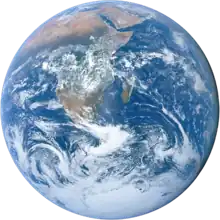 Geography portal
Geography portal -
 History portal
History portal -
 Mathematics portal
Mathematics portal -
 Science portal
Science portal -
 Society portal
Society portal -
 Technology portal
Technology portal -
 Random portalRandom portal
Random portalRandom portal -
 WikiProject PortalsWikiProject Portals
WikiProject PortalsWikiProject Portals
Shortcuts to this page: Portal:West Indies • P:CARIB
.JPG.webp)
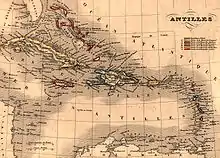


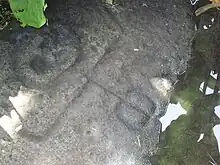
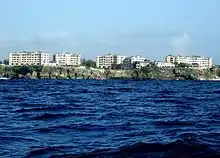
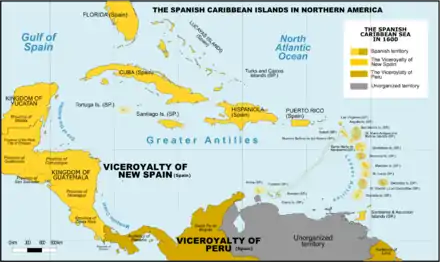


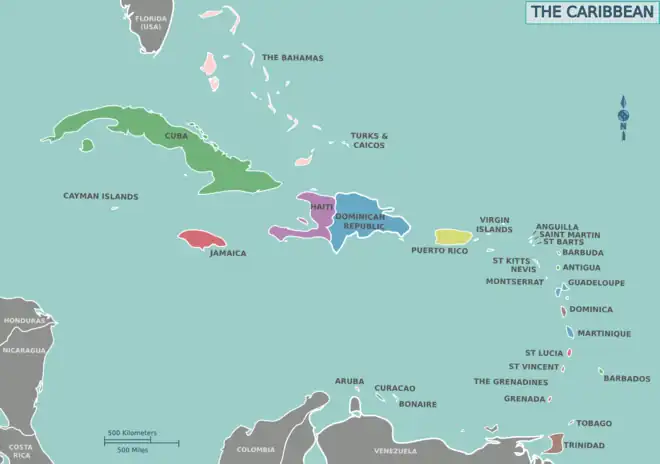

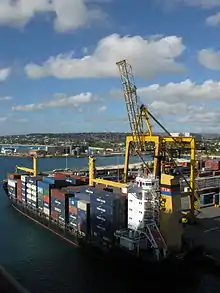
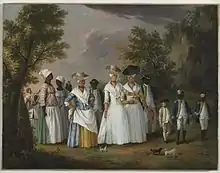

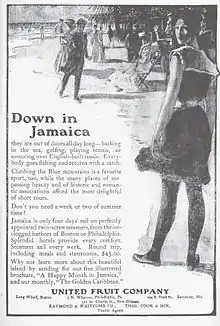
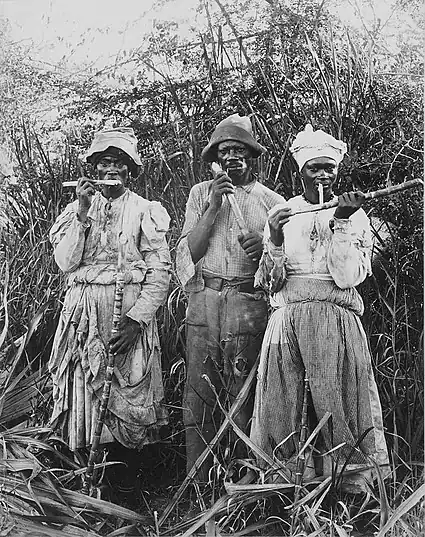

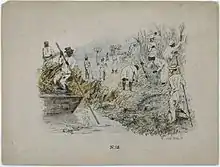

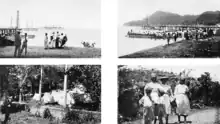
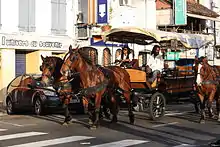
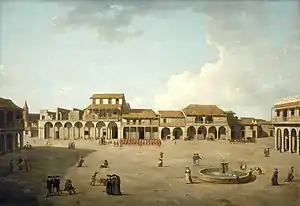
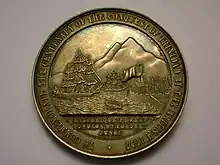
%252C_plate_IV_-_BL.jpg.webp)
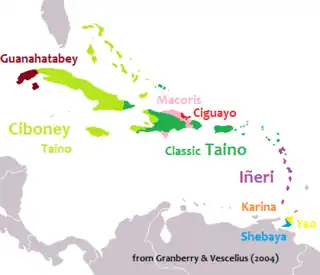
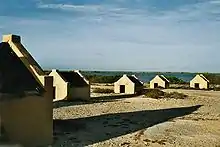
.jpg.webp)